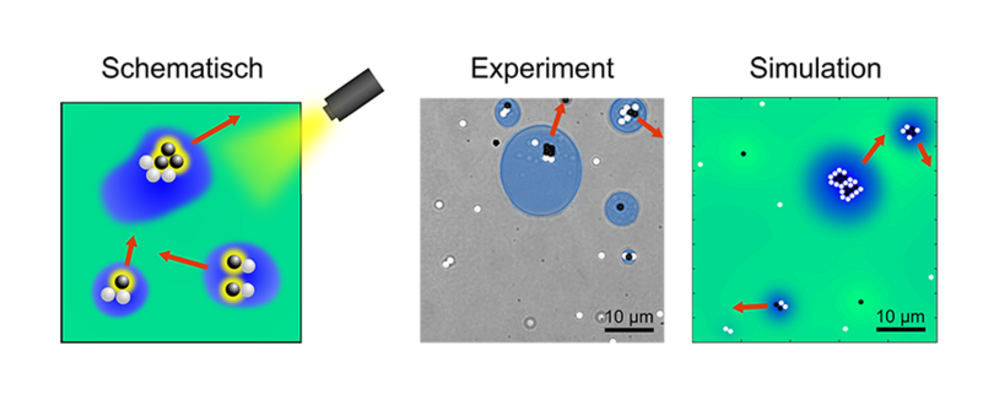By combining two different types of colloid particles in a liquid bath, and activating them using laser lights, the researchers discovered that self-propelling droplets formed, containing the particles as an internal motor. The researchers named them droploids, combining the words droplets and colloids, to describe the superstructures.
“This new feedback system allows researchers to better understand the intrinsic mechanism that guide the formation and movement of small organisms and particles. From this information we can gain fundamental insights into natural systems such as the inner workings of the cell formation process,” says Falko Schmidt, who recently graduated as a PhD at Department of Physics, University of Gothenburg.
The insights from this model system of droploids allow the creation of new types of materials that are inspired by nature, called biomimetic materials.
“You can imagine exploiting the principles of self-assembly and feedback to build artificial systems from already available components that do not need a specific design or complicated fabrication process. Instead, due to their intrinsic interactive nature they themselves build up complex structures that can be used for new intelligent robots for drug delivery inside the human body, faster and more efficient search-and-rescue missions, or even to perform sensing of environmental pollutants and their clean-up,” says Falko Schmidt.
The study is a collaboration by researchers from University of Gothenburg, Heinrich-Heine University Düsseldorf, and the Technical University of Darmstadt. The theoretical models of the project were done in Düsseldorf and Darmstadt, whilst the experimental work was done at the University of Gothenburg.
About the research
Title: Active droploids
Scientific journal: Nature Communications
